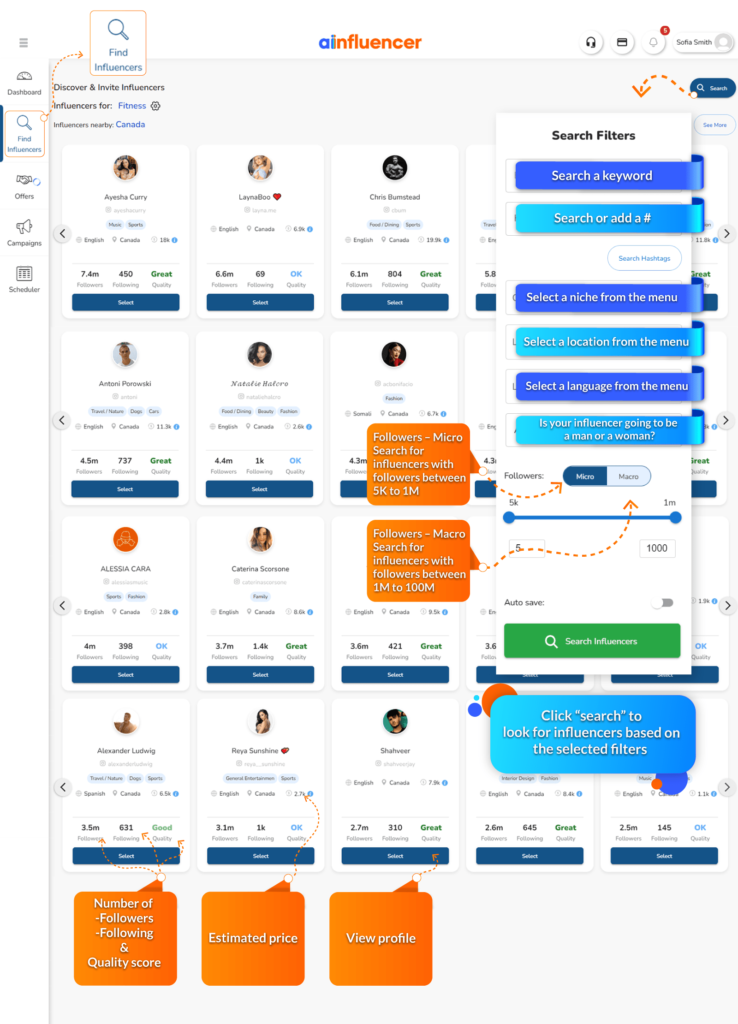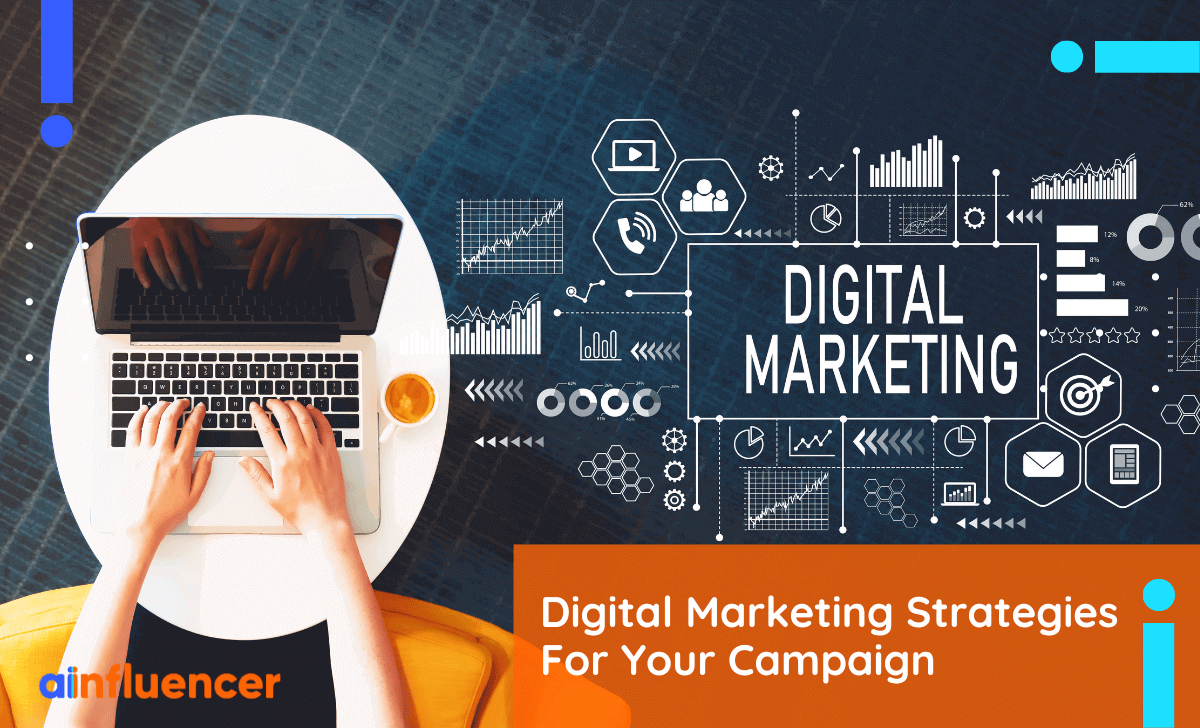A digital marketing plan has become an essential part of any successful marketing campaign in the modern age, and as we look ahead to 2024, it’s crucial for businesses to stay ahead of the curve with the latest digital marketing strategies. With constantly evolving technology and consumer behavior, it’s essential to adapt and adopt new strategies to stay competitive and effectively reach your target audience.
In this marketing guide, we will explore the top digital marketing strategies for your campaign in 2024. From social media marketing to email marketing, search engine optimization, content marketing, and beyond, we’ll provide insights into the most effective tactics and techniques to help you increase brand awareness, drive traffic, generate leads, and boost your ROI. Whether you’re a small startup or a large corporation, implementing these digital marketing tactics can help you achieve your goals and stay ahead of the competition in the fast-paced world of online marketing.
What is a digital marketing strategy?
A digital marketing strategy is a comprehensive plan that outlines how a business or organization will use various digital channels, such as search engines, social media, email, and websites, to achieve its marketing goals.
The strategy typically includes a thorough analysis of the target audience, competitive landscape, and business objectives, as well as the identification of key performance indicators (KPIs) that will be used to measure success.
Once the strategy is developed, it should guide the development of specific tactics and campaigns to be executed across digital channels. These may include search engine optimization (SEO), paid search advertising, social media marketing, content marketing, email marketing, and others.
The purpose of a digital marketing strategy is to maximize the impact and efficiency of a company’s marketing efforts by leveraging the unique strengths and capabilities of digital channels.
How to create a digital marketing strategy?
Creating a digital marketing strategy can be a complex process, but here are some steps that can help you get started:
1- Define your target audience
Before you start creating your digital marketing strategy, it’s important to define your target audience and build your buyer persona. This includes demographic information such as age, gender, location, interests, and behavior. This information will help you tailor your marketing efforts to your ideal customer.
2- Set your S.M.A.R.T. marketing goals
Once you have a clear understanding of your target audience, you need to set specific marketing goals for your online marketing strategy. These goals should be specific, measurable, achievable, realistic, and timely goals (also known as S.M.A.R.T. goals). Examples of goals could include increasing website traffic, generating more leads, or improving brand engagement.
3- Conduct a competitive analysis
Research your competition to gain insight into what is working in your industry and what is not. This can help you identify gaps in the market and opportunities to differentiate your brand.
4- Determine your budget
Determine how much you are willing to spend on your digital marketing efforts. This will help you prioritize your marketing channels and tactics.
5- Choose your marketing channels
Decide which marketing channels you will use to reach your target audience. This could include social media, email marketing, search engine optimization (SEO), pay-per-click (PPC) advertising, content marketing, and more.
6- Develop your content strategy
Develop a content strategy that aligns with your marketing strategies, goals, and target audience. This includes creating content that is relevant, valuable, and engaging.
7- Set up tracking and analytics
Implement tracking and analytics tools to measure the success of your digital marketing efforts. This will help you identify what is working and what needs to be improved.
8- Test and optimize
Continuously test and optimize your digital marketing strategy to improve its effectiveness over time. This could include A/B testing, analyzing customer feedback, and making data-driven decisions.
Remember that creating a digital marketing strategy is an ongoing process. It’s important to regularly review and adjust your strategy based on the results you are seeing and changes in the market.
Top digital marketing strategies
1- Publish a blog
Publishing a blog can be a powerful tool for online marketing strategy in several ways:
- Increases website traffic: By regularly publishing high-quality and relevant content on a blog, you can attract more visitors to your website. These visitors may also share your content on social media, further increasing your website’s visibility and traffic.
- Improves search engine optimization (SEO): Search engines like Google prioritize websites that regularly publish fresh, informative, and engaging content. By optimizing your blog posts with relevant keywords, metadata, and internal links, you can improve your website’s search engine ranking, making it more visible to potential customers.
- Builds brand authority: A blog can establish your brand as a thought leader and authority in your industry. By providing valuable insights, tips, and news about your industry, you can build trust with your audience, demonstrate your expertise, and establish yourself as a go-to resource for your target customers.
- Generates leads: By including calls-to-action (CTAs) in your blog posts, such as signing up for a newsletter, downloading a free guide, or scheduling a consultation, you can convert blog visitors into leads and potential customers.
- Supports social media efforts: Blog content can also be repurposed and shared on social media platforms, amplifying your social media marketing efforts and reaching a wider audience. Also, shorter social media posts or captions can be created by summarizing blog content. Summarizing can be done manually or through a summarizing tool that makes it easy to meet word or character limits. After summarizing, the text can be shared on social media to engage a broader audience.
2- Influencer Marketing
Influencer marketing involves partnering with social media influencers or other prominent figures in your industry to promote your brand or products to their followers.
This is a top digital marketing strategy that can take your online marketing strategy to the next level. Most brands take advantage of running influencer marketing campaigns to promote their products and services.
The first step to running a successful influencer marketing campaign is to find influencers that are niche related and qualified. Finding influencers manually is a kind of time-consuming and daunting task. Instead, you can use influencer marketplaces like Ainfluencer to facilitate and accelerate this process. Ainfluencer acts as a middleman that helps both brands and influencers connect and collaborate. Its AI-powered search engine offers custom search filters such as location, hashtag, category, gender, language, etc., to help you find target influencers with ease. Once you find your target influencer, you can reach out to them, invite them to collaborate with you, negotiate your terms, and even close deals right in the app.

Do you know how easy it is to create an influencer marketing campaign on Ainfluencer? Check out the following video to learn how to do it:
3- Search Engine Optimization (SEO)
This involves optimizing your website and content to rank higher in search engine results pages (SERPs) for relevant keywords. This can include on-page optimization, link building, and content creation.
4- Pay-Per-Click Advertising (PPC)
This involves placing ads on search engine result pages or social media platforms and paying each time someone clicks on your ad. This can be an effective way to drive traffic and generate leads.
5- Content Marketing
This involves creating and sharing valuable, informative content that attracts and engages your target audience. This can include blog posts, videos, infographics, and more.
6- Social Media Marketing
This involves using social media platforms to connect with your target audience and promote your products or services. This can include creating and sharing content, engaging with followers, and running social media ads.
7- Email Marketing
This involves using email to communicate with your customers and prospects and can include newsletters, promotional offers, and automated drip campaigns.
8- Video Marketing
This involves using videos to promote your brand or products and can include explainer videos, product demos, and customer testimonials.
9- Affiliate Marketing
Affiliate marketing involves partnering with other businesses or individuals to promote your products or services and paying a commission for each sale that is generated through their referral.
Conclusion
In conclusion, digital marketing strategies have evolved significantly in the past few years, and this trend is anticipated to continue in 2024. Companies must stay on top of the latest trends, such as artificial intelligence (AI), automation, and customer segmentation, to make sure their campaigns are effective. Having an up-to-date website with a clear user interface and quality content will also help companies reach their target audience more effectively.
1- How do you create a digital marketing campaign strategy?Creating a digital marketing campaign strategy can be broken down into several key steps. Here’s a general overview of the process:
Define your campaign goals: Start by identifying what you want to achieve with your campaign.
Identify your target audience: Determine who your ideal customer is and what their needs and pain points are.
Choose your digital marketing channels: Decide which digital marketing channels are best suited for your campaign goals and target audience.
Develop your messaging and creative: Craft messaging and creative that resonates with your target audience and aligns with your campaign goals.
Set your budget and timeline: Determine how much you can afford to spend on your campaign and how long it will run.
Launch and monitor your campaign: Launch your campaign and monitor its performance closely. Use analytics tools to track key performance indicators (KPIs) such as click-through rates, conversion rates, and return on investment (ROI).
Optimize your campaign: Use the data you gather from monitoring your campaign to make data-driven optimizations. This could include adjusting your targeting, refining your messaging, or reallocating your budget to the best-performing channels.
What are the 4Ps of marketing? (Marketing mix explained) The four Ps are product, price, place, and promotion.





![Read more about the article How to Become a Fashion Nova Ambassador: [The Ultimate Guide + Best Alternative in 2024]](https://blog.ainfluencer.com/wp-content/uploads/2023/12/Fashion-Nova-ambassador-featured-1-300x182.jpg)



